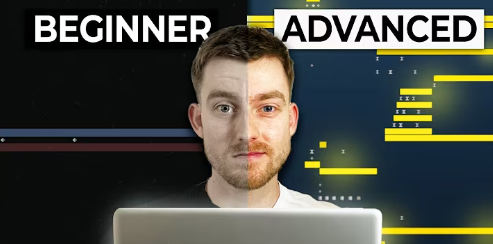This chapter encompasses an updated analysis of the various scenes of Mechanical Saga’s, in terms of narrative and visual scene, which directed the music composition in emotional terms and helped to define music changing triggers.
Menu
The menu section consists of a visual representation of “Iridir Forest”, which is described in the next scene, together with the sky (on the left), representing the long adventurous journey that the player will dive into. Keywords for the music composition include mistery, adventure, fantasy and long journey.
Story-Telling
At the start of the game, a storytelling sequence introduces the player to the unfolding conflict, allowing them to choose their character and customize its features. This moment sets the stage for an epic journey, making it an ideal place to introduce the main theme. The theme conveys a sense of power and grandeur, symbolizing the beginning of a long conquest while also hinting at mystery. This theme will be re-introduced near the final battle and at the end of the first episode, reinforcing its significance, tying key moments together and emphasizing the weight of the player’s journey.
Iridir Forest
- Scene Description
In this scene we encounter ourselves in a forest with a lake. The atmosphere is calm and peaceful until soldiers inevitably appear for a first fight. Later, after having completed the next section, Iridium’s Prison, the player goes back to Iridir Forest, in the “Upper Cliff”.
- Story and Gameplay
Our character has the possibility to wander freely in the forest until he is approached by three soldiers who claim that he was guilty of killing various soldiers of their squad, even though he had swore allegiance to them. After this unavoidable dialogue there is the first fight against them. After the battle there will be more soldiers walking around, and there is always the possibility to fight them individually (although sometimes then there appear more soldiers in the fight) if the player chooses to, earning points and getting stronger in case of winning. Later there will be another fight with a so called “beast”, which is stronger than the common soldiers. After this fight the player is able to transition to Iridir’s Prison, which is the next described scene, and after its completion, the player leaves the prison, entering the “Upper Cliff” zone of Iridir’s Forest for a final dialogue with his friend, being happy and relieved to have gotten out of this adventure alive, but also longing for the life of others that were killed within the prison.
- Music Soundtrack
For this scene there are three musical themes, with the first one ending with the beginning of the first battle. There is also a song for the battle scene, which will be used for all common battles, followed by the second theme that will continue in the next scene, which aims to purvey some relief after winning the first fight. The third theme occurs when the player gets to the “Upper Cliff” after completing the prison scene.
What should the music portray?
First Theme (Iridir Forest I): Sense of having to conquer something; the start of a new journey; fantasy; motivation.
Second Theme (Iridir Forest II): Relief; sense of victory; positive feeling;
Third Theme (Iridir Forest III): Relief, end of a tense journey, melancholy, contemplation, mixture of sadness and joy.
Fight Theme: Challenge, adrenaline, drama, upbeat.

